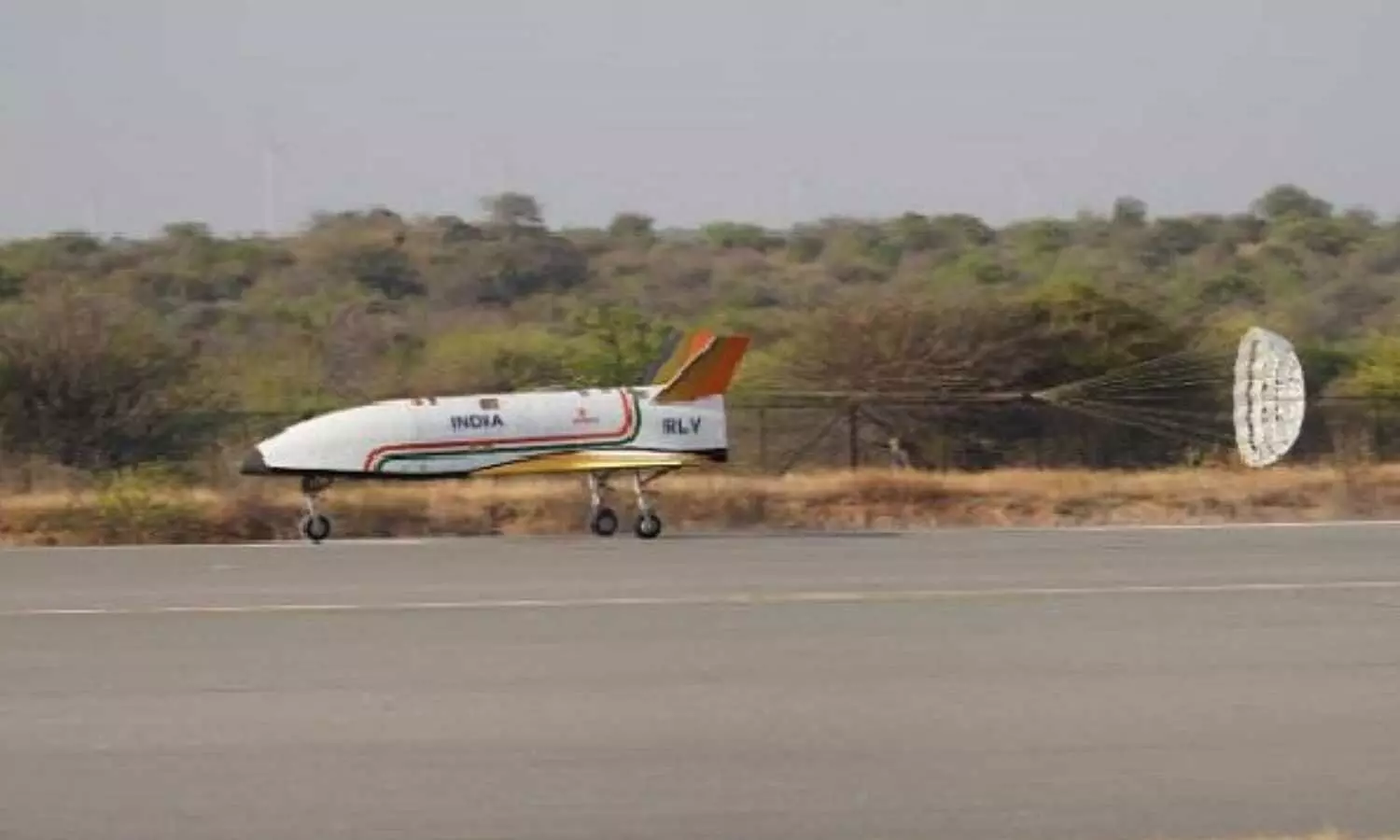3rd and Final Landing Experiment of Reusable Launch Vehicle 'Pushpak' Successfully Conducted by ISRO
With the completion of RLV LEX's objectives, ISRO commences the development of RLV-ORV, an orbital reusable vehicle.
image for illustrative purpose

On Sunday, the Indian Space Research Organisation (ISRO) accomplished the third landing experiment of the Reusable Launch Vehicle (RLV LEX-03), named 'Pushpak. ' The space agency announced that the test took place at the Aeronautical Test Range (ATR) in Chitradurga, Karnataka, at 07:30 IST.
ISRO on X (formerly Twitter) tweeted, ‘’Hat-trick for ISRO in RLV LEX! ISRO achieved its third (and final) consecutive success in the Reusable Launch Vehicle (RLV) Landing EXperiment (LEX) on June 23, 2024. "Pushpak" executed a precise horizontal landing, showcasing advanced autonomous capabilities under challenging conditions. With the objectives of RLV-LEX accomplished, ISRO embarks on RLV-ORV, the orbital reusable vehicle.’’
Chairman of the Indian Space Research Organisation (ISRO), S. Somanath, praised the crew for their hard work in continuing to succeed on such "complex missions." For this mission, J. Muthupandian is in charge as Mission Director, and B. Karthik is in charge as Vehicle Director.
By simulating a re-entering vehicle's approach, landing interface, and high-speed landing conditions, this mission demonstrated ISRO's competence in acquiring critical technologies for the development of Reusable Launch Vehicles (RLVs). Future Orbital Re-entry Missions will rely on this mission's validation of the complex guidance algorithm that handles error corrections in the longitudinal and lateral planes.
Details of the RLV LEX mission's technical aspects:
1. Following on the heels of the RLV LEX-01 and LEX-02 missions, which proved the RLV's autonomous landing capability in more difficult environments, comes the RLV LEX-03 mission.
2. The winged vehicle known as 'Pushpak' was released from an Indian Air Force Chinook Helicopter at a height of 4.5 km. Starting at a release point 4.5 km from the runway, Pushpak autonomously performed cross-range correction manoeuvres, bringing it close to and landing it on the centerline of the runway.
3. The aerodynamic configuration of the Pushpak allowed it to land at a speed higher than 320 kmph, in contrast to the 260 kmph of commercial aircraft and the 280 kmph of conventional fighter aircraft.
4. Utilising a brake parachute, the vehicle's velocity was brought down to nearly 100 kmph after touchdown. Landing gear brakes were then used for further deceleration.
5. As it rolled along the runway, Pushpak used its rudder and nose wheel steering system to keep itself steady and accurate.
6. The RLV-LEX fused data from several sensors, such as a NavIC, a flush air data system, an inertial sensor, and a radar altimeter.
7. ISRO demonstrated its competence in designing reusable flight systems for multiple missions with the RLV-LEX-03 mission, which utilised the same wing body and flight systems as the LEX-02 mission without any modifications.
The Vikram Sarabhai Space Centre (VSSC), in collaboration with a number of other ISRO centres like SAC, ISTRAC, and SDSC-SHAR, led this mission. The Indian Air Force (IAF), Aeronautical Development Establishment (ADE), Aerial Delivery Research and Development Establishment (ADRDE), Regional Centre for Military Airworthiness (RCMA) under the Centre for Military Airworthiness and Certification (CEMILAC), National Aerospace Laboratories (NAL), Indian Institute of Technology, Kanpur, Indian aerospace industrial partners, Indian Oil Corporation of India, and the Airport Authority of India also played important roles.
This ongoing success, as pointed out by S. Unnikrishnan Nair, Director of VSSC, strengthens ISRO's faith in the vital technologies required for future orbital re-entry missions.

